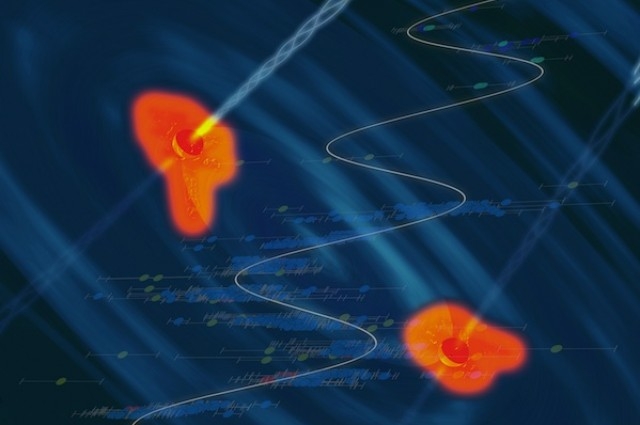Two Supermassive Black Holes Set To Collide
photo credit: An artist's conception of a black hole binary in a heart of a quasar, with the data showing the periodic variability superposed / Santiago Lombeyda/Caltech Center for Data-Driven Discovery
An unusual, repeating light signal in the distance may be coming from the final stages of a merger between two supermassive black holes. At just a few hundredths of a light-year apart, they could be merging in a mere one million years. An event like this has been predicted based on theory, but has never been observed before, according to a new study published in Nature this week.
The supermassive black holes at the center of most large galaxies (including ours) appear to co-evolve with their host galaxies: As galaxies merge, their black holes grow more massive too. Since we can’t actually see black holes, researchers look for their surrounding bands of material called accretion disks, which are produced by the intense pull of the black hole’s gravity. The disks of supermassive black holes can release vast amounts of heat, X-rays, and gamma rays that result in a quasar—one of the most luminous objects in the universe.
Caltech’s Matthew Graham and colleagues noticed the light signal coming from quasar PG 1302-102 while studying variability in quasar brightness using data from the Catalina Real-Time Transient Survey, which continuously monitored 500 million celestial light sources across 80 percent of the sky with three ground telescopes.
See full text
